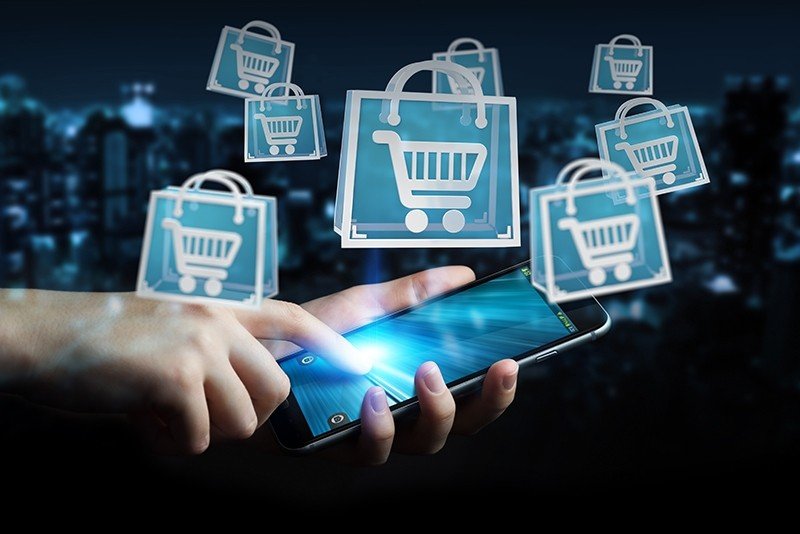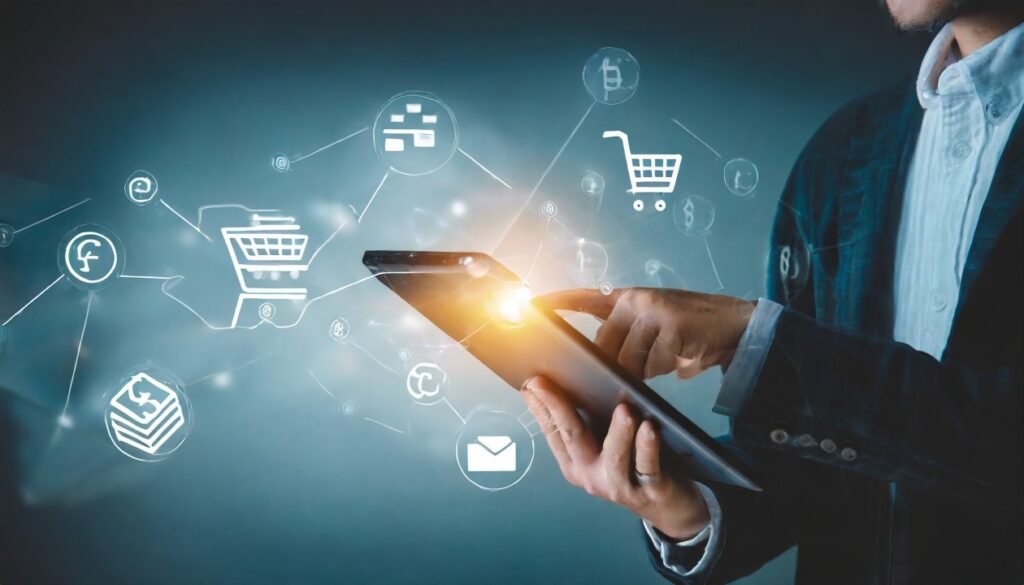Subtotal $0.00
In just a few decades, e-commerce has transformed from a niche experiment into a global phenomenon that shapes the way we buy, sell, and live. What started as a convenient alternative to brick-and-mortar shopping is now a multi-trillion-dollar industry that touches nearly every corner of the world. From fashion and electronics to groceries and digital services, e-commerce has become an essential part of modern life. But how did it grow so fast, and what does the future hold? Let’s explore the evolution of e-commerce and its impact on consumers and businesses alike.
The Rise of Online Shopping
The roots of e-commerce trace back to the mid-1990s, when pioneers like Amazon and eBay began experimenting with online marketplaces. At the time, the idea of entering credit card details on a website seemed risky to most people. But as the internet matured and security improved, trust grew—and so did sales.

By the early 2000s, online shopping had gone mainstream. Consumers were drawn to the convenience of browsing products from home, comparing prices instantly, and having goods delivered to their doorsteps. For many, it eliminated the need for long lines, crowded stores, and the limitations of local inventory.
Key Drivers of Growth
Several factors explain why e-commerce has expanded so rapidly:
- Convenience – Shoppers can order 24/7, from anywhere in the world.
- Variety – Online platforms offer endless options, from global brands to niche products.
- Technology – Mobile apps, secure payment gateways, and user-friendly websites have made the process seamless.
- Logistics – Faster shipping, real-time tracking, and easy returns have removed traditional barriers.
As a result, e-commerce has grown from a supporting role in retail to the primary shopping method for millions of people.
The Role of Mobile and Social Commerce
One of the biggest shifts in recent years has been the move from desktop to mobile. Today, the majority of e-commerce traffic comes from smartphones. Mobile wallets, one-click payments, and personalized app experiences have made buying as simple as a swipe.
Alongside this, social media platforms have emerged as powerful e-commerce tools. Instagram, TikTok, and Facebook are no longer just for sharing content; they’ve become digital storefronts. Shoppable posts, influencer marketing, and live-stream shopping events allow brands to reach consumers directly, blending entertainment and commerce seamlessly.
The Impact on Traditional Retail
The rise of e-commerce has forced brick-and-mortar stores to reinvent themselves. While some retailers have struggled or closed, others have adapted by embracing omnichannel strategies. This means creating a consistent shopping experience across both physical and digital channels. For example, customers might browse products online but choose in-store pickup, or they might try items in a store and then order different sizes online.
Retailers who integrate technology—like self-checkout, interactive displays, and personalized recommendations—are better positioned to compete in this new landscape.
Emerging Trends in E-Commerce
E-commerce is constantly evolving. Some of the latest trends include:
- AI and Personalization – Algorithms recommend products based on browsing habits, making shopping more tailored.
- Sustainability – Consumers are pushing for eco-friendly packaging, ethical sourcing, and transparent supply chains.
- Voice Commerce – Smart speakers like Alexa and Google Home allow shoppers to order with simple voice commands.
- Augmented Reality (AR) – Virtual try-ons for clothes, makeup, or furniture let shoppers visualize products before purchasing.
- Subscription Services – From meal kits to curated fashion boxes, subscriptions are changing how we consume everyday products.
Challenges Ahead
Despite its growth, e-commerce faces challenges. Cybersecurity threats remain a concern, as data breaches and fraud can erode trust. Logistics, while advanced, still struggles with last-mile delivery in remote areas. Additionally, the sheer competition online makes it difficult for small businesses to stand out without creative branding or marketing strategies.

The Future of Shopping
Looking ahead, e-commerce is set to grow even more integrated into our daily lives. The line between physical and digital shopping will blur, with technologies like AR, AI, and blockchain creating new possibilities. Personalized experiences will become the norm, and sustainability will play a bigger role in shaping consumer choices.
For businesses, the message is clear: adapt to the digital-first mindset or risk being left behind. For consumers, the future promises even more convenience, variety, and innovation.
Final Thoughts
E-commerce has come a long way since its early days, reshaping the retail industry and changing how people connect with brands. What was once a novelty is now an everyday necessity, and the pace of change shows no signs of slowing. From mobile apps to AI-driven shopping assistants, the future of e-commerce is as dynamic as the technology that drives it.
For shoppers, it means more choice and convenience. For businesses, it means endless opportunities to innovate. And for the world, it’s a reminder that the way we shop will never stop evolving.













